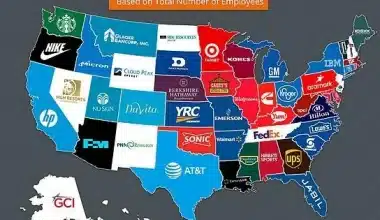Companies and individuals that wish to grow their clientele or fan base are always looking for novel ways to advertise. As the number of people who use social media has grown, so has the amount and popularity of sponsored content. By understanding how sponsored content works and how to make it, you can decide if it makes sense for your business or platform. In this article, we look at a few common examples, outline the characteristics of sponsored content, and compare it to native advertising.
Sponsored Content
Sponsored content, commonly referred to as an “advertorial,” is a type of advertising content from a sponsor or company that is published by another person or media outlet and may mimic the content the publisher currently provides. Also, sponsored content frequently looks more natural than standard advertising that you might see on websites or other platforms. People and businesses often use sponsored content in their social media posts to reach more people and build trust.
See Also VIDEO IDEAS: Best Tips & What You Should Know
Advantages of Sponsored Content
Sponsored content often supports the publisher’s and partner’s brand strategy, unlike native advertising, which usually aims to sell a product. Sponsored content embeds companies, products, and services inside the website, boosting clicks and traffic.
Other advantages of creating sponsored content for companies, brands, and content providers include:
- Reach: Businesses might not be able to reach particular online consumers via conventional marketing or advertising channels and strategies.
- Credibility: By showing each audience that a partner trusted in them and their business enough to host the sponsor or sponsor content, sponsored content can boost credibility.
- Generally more memorable than one-off commercials is storytelling. Because sponsored content frequently includes a plot that is tied to the publisher’s material, the advertisement is frequently a part of a larger narrative the brand is conveying.
- Flexibility: The formats are scalable across several platforms. Sponsors can use the publisher’s platform where they wouldn’t otherwise advertise, and the publisher can use the sponsor’s resources.
- In brand collaborations, it’s common practice to foster ties by providing host sites with resources and equipment for content creation. For instance, a fashion blogger may They often use a brand’s images and give the brand the chance to advertise on their website.
- Reduced hosting costs: Instead of charging per click, businesses usually charge a fee per piece of content. Frequently, the expense of content creation is covered by the sponsor, leaving the poster with the straightforward task of releasing the content.
Example of Sponsored Content
Here are some instances of sponsored content:
#1. Food Blogging
A well-known food blogger might post a video of themselves making a dish in their kitchen with a brand-new blender that the blender company gave them. The blogger gets paid for creating content that supports the influencer’s story now that the blender company has access to their audience. Both parties stand to gain, and the consumer might not feel as though their usual viewing experience has been disrupted.
#2. Website Quiz
A camping and outdoors blog may feature a popular quiz website’s plant species quiz. The sponsor could use the blogger’s natural material to improve the blog reader’s experience if the blogger cannot design a quiz. Extra quizzes may attract new users and improve blog readers’ experience.
#3. Snapchat Filters
A well-known sports franchise may create a social media photo filter with a background that looks like its location, replete with sports banners and televisions, to give viewers the impression that they are dining there. As a result, the user may become curious and investigate any sales or events held by the company. The publisher in this case is the social network company, which already offers filters, so the advertising feels acceptable. In a similar way, the chain could use the filter to post promotional content on the social media site to get people to go there.
How Do You Identify Sponsored Content?
The majority of advertisements are obvious. They are instantly recognizable by people, who most likely ignore them without giving them a second thought. However, sponsored content is so well integrated into its environment that you may not even realize you are viewing an advertisement unless you pay close attention.
Look for any text in the byline or description of a video that would imply that the content has been paid for. Sites with US content must say if the content was paid for by another company. It might, however, be referred to in an odd way, such as “paid post,” “content from.,”or Brand Publisher.
The notice might either be hidden inside the text of the article or tucked away in small print. You must carefully study the image below to see that Spotify sponsored the article. Sponsored material mixes in so nicely that many people may not be able to tell it from impartial content. 31% of UK 12–15-year-olds could distinguish ads from news in Google’s search results. Around 80% of US high school and college students couldn’t distinguish ads from the news.
What Is the Purpose of Sponsored Content?
Here are just a few purposes of sponsored content:
#1. They Increase Sales
Sponsored articles have the ability to increase revenue for your company when done well. One-third of millennials, according to Business Insider, have made a purchase from a brand after reading a sponsored post. This was based on findings from a 2017 survey when sponsored content wasn’t nearly as popular as it is now. Although there aren’t any studies that particularly examine sponsored articles yet, the influence of sponsored material is clear.
#2. They’re More Reliable
Customers identify the advertising brand with the publisher when they read about a good or service in a sponsored article. This portrays the brand favorably and tells the reader that the publisher trusts it, assuming that the reader respects the publisher, which is likely if they have visited the website to read the content.
#3. They Get Customers’ Attention
According to a study conducted by IPG Media Lab, publishing sponsored content can pique consumer interest and move potential buyers down the sales funnel. After reading sponsored content, consumers are 14% more inclined to look up the advertiser for further material, according to the survey. As this survey needs to be updated, the actual number is significantly greater in the current era of peak media popularity.
#4. They Do More Than Just Advertise
The fact that sponsored articles are not the blatant, overt adverts that audiences are turning more and more against may be their biggest advantage. A sponsored article can accomplish much more than just promoting a good or service. A sponsored article may provide the reader with information, amusement, or inspiration to reflect profoundly on a subject that, at the least, slightly interests them, depending on the type of content that readers expect from the publisher itself. The same degree of depth could never be provided by a single native advertisement.
#5. Their engagement rates are higher
Native adverts are unlikely to get as much initial notice as sponsored pieces. Readers click on banner ads with engaging headlines or bylines instead of avoiding it. Customers will read adverts because they trust the publisher. Because it’s more personalized and relevant, this content is more likely to engage readers.
#6. They Provide Longer Exposure
A display advertisement might pique viewers’ interest for a brief moment. Yet, sponsored content meant to promote a brand may take more than five minutes to read through from beginning to end. A potential consumer is much more likely to remember a brand after reading about it for a while than after seeing it briefly when browsing social media or engaging in other online activities.
How Do I Create Sponsored Content?
Follow these steps to create sponsored content:
- Set a target: In essence, sponsored content is a type of content marketing, a strategy that focuses on producing and disseminating useful material to get visitors to your website.
- study the people you want to reach: The first step in producing sponsored content is identifying your target audience.
- Do your homework and pick a publisher: Selecting a business, influencer, or publisher to share your sponsored content is the next step.
- Choose a content category: Choose a content type that supports your objectives. For instance, if increasing organic search traffic is one of your objectives, you can think about sponsoring long-form content.
- Put together your sponsored content by: Publishers and content producers frequently choose to produce the sponsored material themselves. For instance, The New York Times’ T Brand Studio collaborates with businesses to produce branded content (like the Dropbox content we saw earlier).
- Analyze your outcomes: The outcomes you can anticipate will be influenced by the platform and material you publish on. For instance, sponsored posts on social media can quickly increase engagement and referral traffic. Yet as soon as a content provider publishes fresh content, these results will start to decline.
What Are the 4 Types of Sponsorship?
There are four different types of sponsorship available, and each one can help your market advertisements succeed.
- Financial Support: As a sponsor, you can provide money to an organization or particular event and get recognized in return. There are many ways to accomplish this, such as paying venues directly, matching donations, paying for event wi-fi, or even paying for meals. In essence, you are donating money in exchange for name recognition and brand promotion.
- In-kind Support: The sponsor offers free services or goods in lieu of financial support. Its contribution might be anything from providing food for a festival, using its own speakers for a music event, or printing posters and banners. Prize sponsors and venue partners are further instances of this kind of sponsorship.
- Funding of media: With a media sponsorship, another person’s action is promoted. This promotion may take the shape of blog pieces published on social media accounts, broadcasting material, or postings on social media accounts. The event might be covered by a local television network, which would be advantageous media coverage.
- Advertising Partners: Similar to a media sponsorship, promotional partners typically consist of people that advertise an activity or event on various social media platforms, such as bloggers and influencers. In return, these people might get a speaking spot at the forthcoming conference or get something else.
Conclusion
Ads are constantly being thrown at consumers today. Many internet users now simply ignore advertisements on websites or even use software to completely block them. You can reach your audience without being too pushy with sponsored content, and it can even help your business look more trustworthy. To incorporate sponsored content into your marketing campaign, follow the instructions provided here.
Related Articles
- HOW TO MAKE MONEY ON INSTAGRAM IN 2023: Top 7 Ways
- HOW MUCH DO INFLUENCERS MAKE: 2023 Guide & All You Need!!!
- Fiscal Agent: Best Practices & Detailed 2023 Guide
- BUDWEISER LOGO: Meaning, Origin, Event Center and History






